and the site receives a small commission
You are using an out of date browser. It may not display this or other websites correctly.
You should upgrade or use an alternative browser.
You should upgrade or use an alternative browser.
Sunset Photography
- Thread starter rookies
- Start date
Kodiak Qc
Suspended / Banned
- Messages
- 20,285
- Name
- French Canadian living in Europe since 1989!
- Edit My Images
- Yes
•Most importantly how so we avoid flares?
After looking at your profile, I see that your gear will react very
differently to mine in this, as yours is known to be more prone
to suffer from this parasitic effect.
The simple approach to sunset is to STTR and keep the ISO to
the lower nominal / native value.
- Messages
- 1,389
- Edit My Images
- No
Sunrise or sunset I use pretty much the same technique.
There are really no tricks, just lots of practice.
#1 I always shoot raw as it gives me more control when post processing
#2 Nowdays - depending on the scene I will either be in aperture priority (with some exposure compensation dilaed in if needed) with the aperture set around F8-F11 (for the more simple scenes) or in manual exposure mode when I think the light meter will be fooled by the light or I am using ND grads (to control the contrast).
#3 ISO will be set to the lowest value that will give me the exposure thet I want
#4 A tripod , and a remote relase give me a lot more exposure options.
#5 I will normall focus about 1/3 the waay into the scene or on most important element in the scene. Manual focus if need be.
#5 No unwanted filters on the lens, to reduce flare.
#6 Use a lens hood if possibe, to reduce flare
#7 Shade the front of the lens, if needed, to reduce flare.
#8 Use the histogram as a guide.
Here are some examples:
#1 Dawn. 3 stop ND grad and a triopd was used.
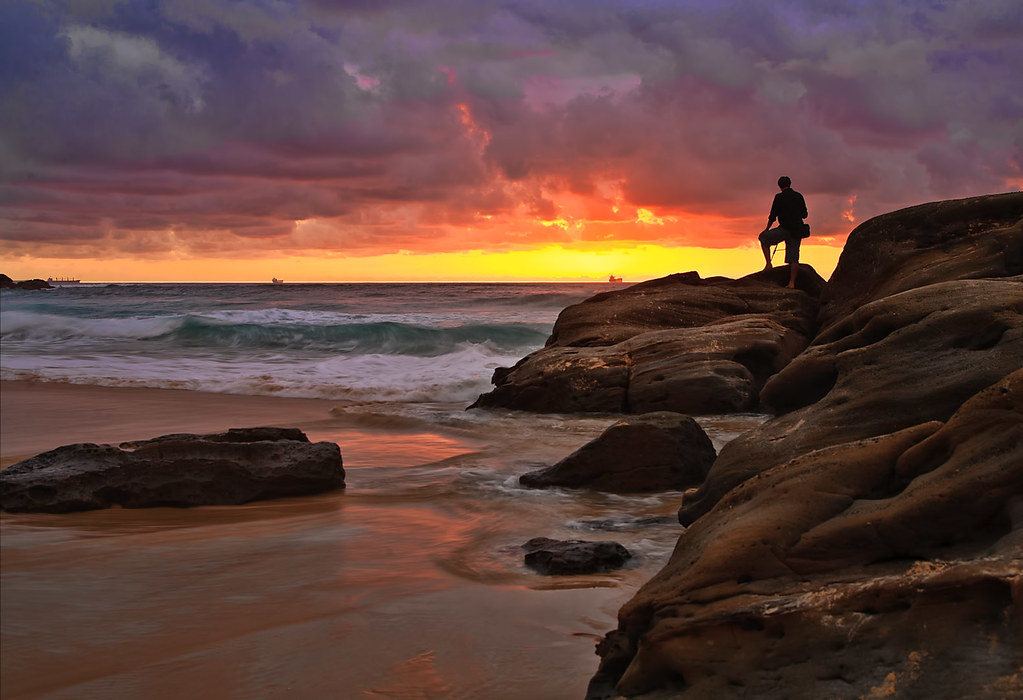 The photographer by Richard Taylor, on Flickr
The photographer by Richard Taylor, on Flickr
#2 Sunset - Hand held
 Sunset at Newcastle (1) by Richard Taylor, on Flickr
Sunset at Newcastle (1) by Richard Taylor, on Flickr
#3 Dawn - A tripod was used.
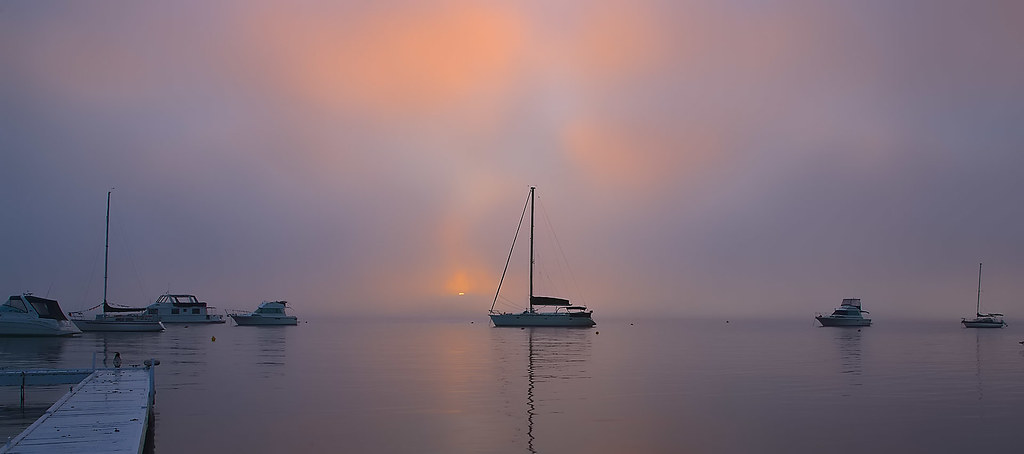 Toronto sunrise - 7:18am by Richard Taylor, on Flickr
Toronto sunrise - 7:18am by Richard Taylor, on Flickr
There are really no tricks, just lots of practice.
#1 I always shoot raw as it gives me more control when post processing
#2 Nowdays - depending on the scene I will either be in aperture priority (with some exposure compensation dilaed in if needed) with the aperture set around F8-F11 (for the more simple scenes) or in manual exposure mode when I think the light meter will be fooled by the light or I am using ND grads (to control the contrast).
#3 ISO will be set to the lowest value that will give me the exposure thet I want
#4 A tripod , and a remote relase give me a lot more exposure options.
#5 I will normall focus about 1/3 the waay into the scene or on most important element in the scene. Manual focus if need be.
#5 No unwanted filters on the lens, to reduce flare.
#6 Use a lens hood if possibe, to reduce flare
#7 Shade the front of the lens, if needed, to reduce flare.
#8 Use the histogram as a guide.
Here are some examples:
#1 Dawn. 3 stop ND grad and a triopd was used.
 The photographer by Richard Taylor, on Flickr
The photographer by Richard Taylor, on Flickr#2 Sunset - Hand held
 Sunset at Newcastle (1) by Richard Taylor, on Flickr
Sunset at Newcastle (1) by Richard Taylor, on Flickr#3 Dawn - A tripod was used.
 Toronto sunrise - 7:18am by Richard Taylor, on Flickr
Toronto sunrise - 7:18am by Richard Taylor, on Flickr
Last edited:
- Messages
- 4,240
- Edit My Images
- No
Mode really is what you prefer, I use M as I find it easiest to react quickly to changing light levels.
To a degree modern DSLRs have changed the game a little as it's now possible to underexpose by 3 or 4 stops and easily bring back the detail without generating noise, it's what I do on the D800.. in the past I bracketed shots and combined the results in post
Simon
To a degree modern DSLRs have changed the game a little as it's now possible to underexpose by 3 or 4 stops and easily bring back the detail without generating noise, it's what I do on the D800.. in the past I bracketed shots and combined the results in post
Simon
- Messages
- 1,386
- Edit My Images
- No
Ok Folks
I am wanting know the trick how people take good sunset.
Where do you focus on
What Mode do you use i.e. M or A or what ever
Do you under expose to get the right highlight of the sky?
Most importantly how so we avoid flares?
There's so many variables it's very difficult to give a thorough answer. The best thing about a setting sun is it's golden light, think about using this to illuminate or sidelight a scene instead of simply shooting into it - it's so much easier to expose if you shoot with the sun over your shoulder or off to the side and the effects of the light on the landscape can transform even the blandest of scenes.
Use a lens hood especially if shooting into the sun or with the sun to your side, this will help to cut flare - you could also block the sun with your hand or a sheet of card.
I normally use Aperture Priority or Manual modes, the latter is best for consistency across your shots as long as you react to the changing light.
You could think about grad filters for exposing correctly between the land and sky, or look up exposure blending. As Simon said modern DSLRs have changed things and I no longer use grad filters or have much need to blend with a Nikon D750, as long as you expose for the highlights you can bring back miraculous amounts of shadow detail, but this obviously depends on your own camera.
- Messages
- 8,063
- Name
- Andrew
- Edit My Images
- No
•
After looking at your profile, I see that your gear will react very
differently to mine in this, as yours is known to be more prone
to suffer from this parasitic effect.
The simple approach to sunset is to STTR and keep the ISO to
the lower nominal / native value.
Sorry I have updated my Profile as it was old... I own a Sony A7ii
- Messages
- 8,063
- Name
- Andrew
- Edit My Images
- No
Sunrise or sunset I use pretty much the same technique.
There are really no tricks, just lots of practice.
#1 I always shoot raw as it gives me more control when post processing
#2 Nowdays - depending on the scene I will either be in aperture priority (with some exposure compensation dilaed in if needed) with the aperture set around F8-F11 (for the more simple scenes) or in manual exposure mode when I think the light meter will be fooled by the light or I am using ND grads (to control the contrast).
#3 ISO will be set to the lowest value that will give me the exposure thet I want
#4 A tripod , and a remote relase give me a lot more exposure options.
#5 I will normall focus about 1/3 the waay into the scene or on most important element in the scene. Manual focus if need be.
#5 No unwanted filters on the lens, to reduce flare.
#6 Use a lens hood if possibe, to reduce flare
#7 Shade the front of the lens, if needed, to reduce flare.
#8 Use the histogram as a guide.
Here are some examples:
#1 Dawn. 3 stop ND grad and a triopd was used.
The photographer by Richard Taylor, on Flickr
#2 Sunset - Hand held
Sunset at Newcastle (1) by Richard Taylor, on Flickr
#3 Dawn - A tripod was used.
Toronto sunrise - 7:18am by Richard Taylor, on Flickr
Thanks some lovely images there was much processing done on those.. I reckon the Fishing one has a bit of tweaking? Am I expecting too much out of my camera and not thinking about processing skills?
Kodiak Qc
Suspended / Banned
- Messages
- 20,285
- Name
- French Canadian living in Europe since 1989!
- Edit My Images
- Yes
•Sorry I have updated my Profile as it was old... I own a Sony A7ii
I know that this camera exists…
and that's about it, can't help any further.
- Messages
- 1,389
- Edit My Images
- No
Sorry I have updated my Profile as it was old... I own a Sony A7ii
The camera doesn't really matter, the princials are the same.
Hower some models with a live histogram will make getting the exposure "correct" even easier.
- Messages
- 1,389
- Edit My Images
- No
Thanks some lovely images there was much processing done on those.. I reckon the Fishing one has a bit of tweaking? Am I expecting too much out of my camera and not thinking about processing skills?
All have been "tweaked" from the original raw files - some more than others. I don not spend a lot of time post processing individual images - maybe 5-10 minutes at most.
Even with post processing you do need something reasonable to start with - so get try to get it right in camera as much as possible.
- Messages
- 1,389
- Edit My Images
- No
Not if you control the contrast by using ND grads.But getting the exposure correct for sky or foreground as this the hard bit with sunset?
Another alternative may be to consider using HDR techniques, however this is not so good for moving subjects, will require a bit more post processig, and it can be a bit easy to go "over the top" if you are not careful
..
#1 TMost of these guys are using ND grads (they are shooting a sunrise)
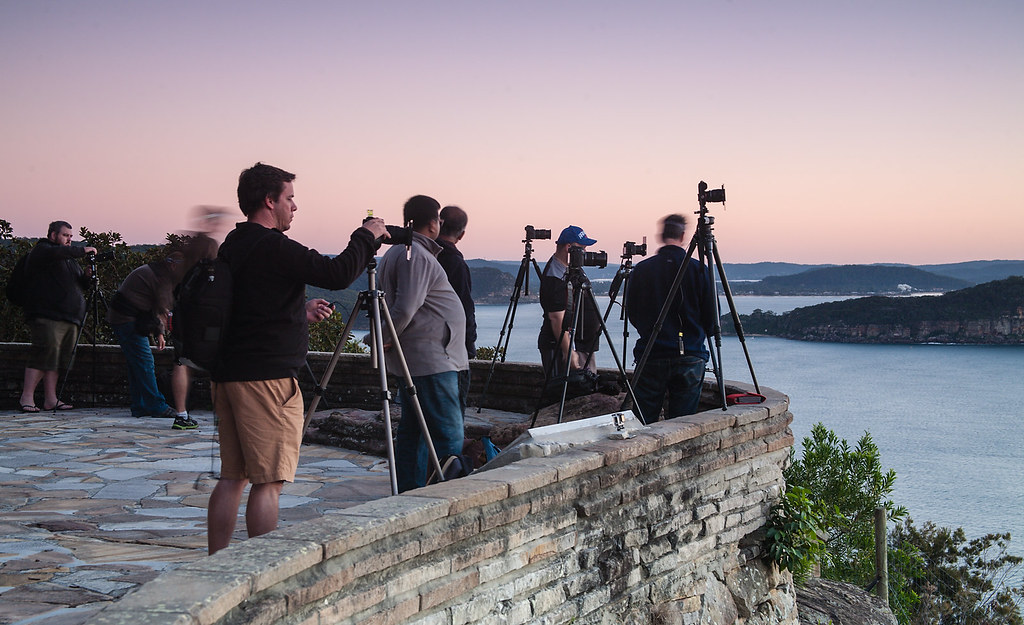 Photographers by Richard Taylor, on Flickr
Photographers by Richard Taylor, on Flickr
Last edited:
- Messages
- 1,389
- Edit My Images
- No
The other alternative in high cotrast scenes is to change your "focus" on what you want to capture.
This is another dawn shoot and I thought the sky was almost enough to "make" the picture along with some silhouettes. Notice the sun is not in the image.
#5 Hand held - no filters.
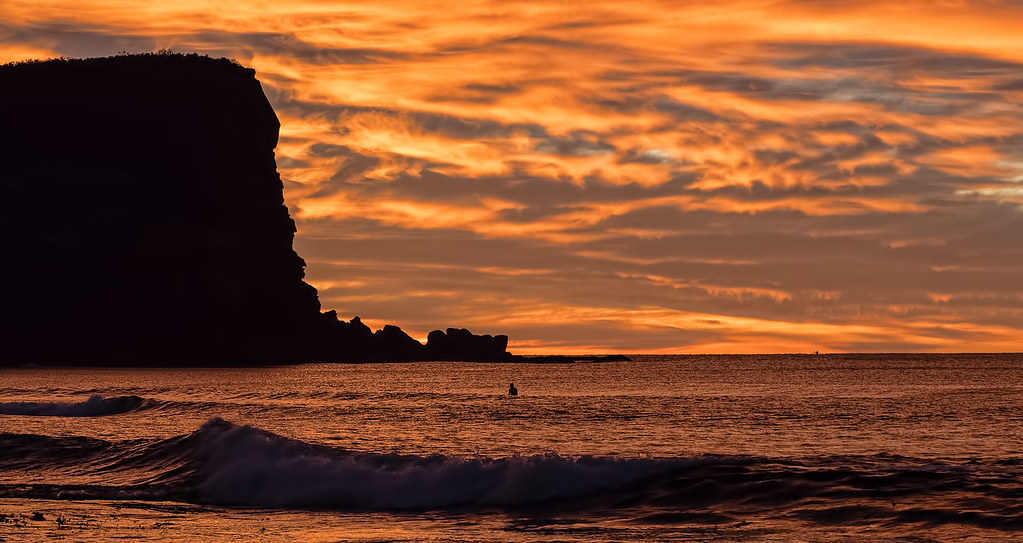 Not a good morning for surfing by Richard Taylor, on Flickr
Not a good morning for surfing by Richard Taylor, on Flickr
This is another dawn shoot and I thought the sky was almost enough to "make" the picture along with some silhouettes. Notice the sun is not in the image.
#5 Hand held - no filters.
 Not a good morning for surfing by Richard Taylor, on Flickr
Not a good morning for surfing by Richard Taylor, on Flickr- Messages
- 8,063
- Name
- Andrew
- Edit My Images
- No
How was that soocThe other alternative in high cotrast scenes is to change your "focus" on what you want to capture.
This is another dawn shoot and I thought the sky was almost enough to "make" the picture along with some silhouettes. Notice the sun is not in the image.
#5 Hand held - no filters.
Not a good morning for surfing by Richard Taylor, on Flickr
- Messages
- 1,389
- Edit My Images
- No
I didn't say sooc - just no (on camera) filters - and basically expose for the sky
Post processing most likely would have been crop, adjust the white balance a bit (make a little redder), tweak the exposure a little (saturation and contrast), resizing for web publication and sharpening.
Post processing most likely would have been crop, adjust the white balance a bit (make a little redder), tweak the exposure a little (saturation and contrast), resizing for web publication and sharpening.
Last edited:
- Messages
- 1,069
- Name
- Scott
- Edit My Images
- No
Focus on hypercocal distance, or subject third in.
Shoot in M, ETTR so slightly overexpose to help avoid noise in shadows. Highlights can be recovered in PP
DON'T shoot with the sun in frame. It's difficult not to but it's too much of a distraction and is not really required in the scene. Shoot ideally 45 degrees away from the sun, keeps exposure even and captures side lighting. This also eliminates flares.
Use a polariser.
Shoot in M, ETTR so slightly overexpose to help avoid noise in shadows. Highlights can be recovered in PP
DON'T shoot with the sun in frame. It's difficult not to but it's too much of a distraction and is not really required in the scene. Shoot ideally 45 degrees away from the sun, keeps exposure even and captures side lighting. This also eliminates flares.
Use a polariser.
- Messages
- 20
- Name
- Elliott
- Edit My Images
- Yes
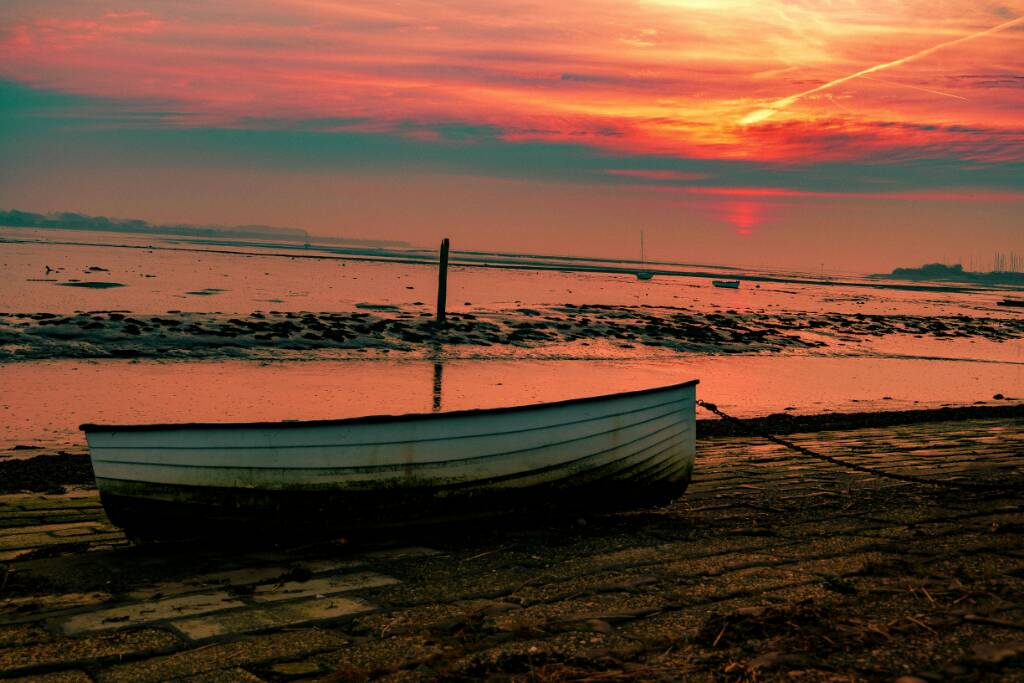
- Messages
- 1,386
- Edit My Images
- No
my first time shooting a sunrise this morning
does a polariser help much? Was wondering what the difference would be?
Very odd colours and a wonky horizon here, but well done for getting up. You wouldn't have seen any benefit of a polariser in his scene, the main benefit is when the sun is to your side and not shooting into it
- Messages
- 13,051
- Name
- Alf
- Edit My Images
- Yes
Hang around after the sun set as that is often when the best shots are to be had. Have a subject to go with the light a good reflective surface like water or wet rock/roads etc can help.
Always remember to look behind you as it may all be happening behind you while you concentrate on a great view with poor light
Learn how to spot the conditions needed for a sunset but they surprise you this one did for me as I was expecting things to be muted due to fog amd yes it was this vivid
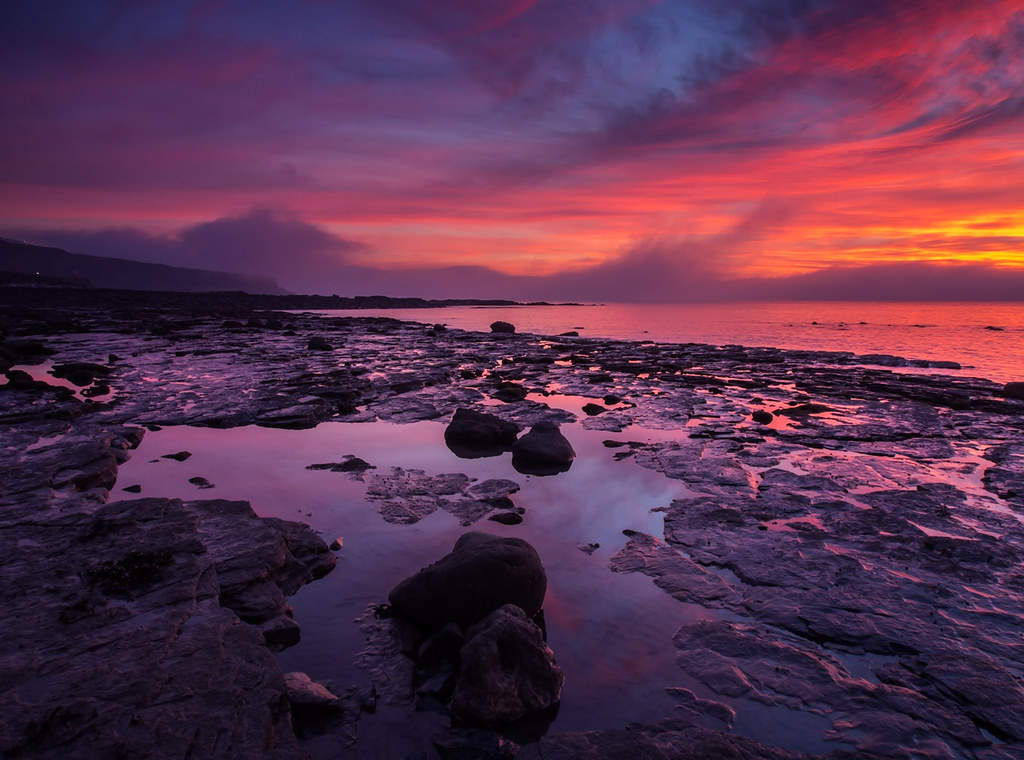 Parton-sunset-2 by Alf Branch, on Flickr
Parton-sunset-2 by Alf Branch, on Flickr
This was with the sun behind me
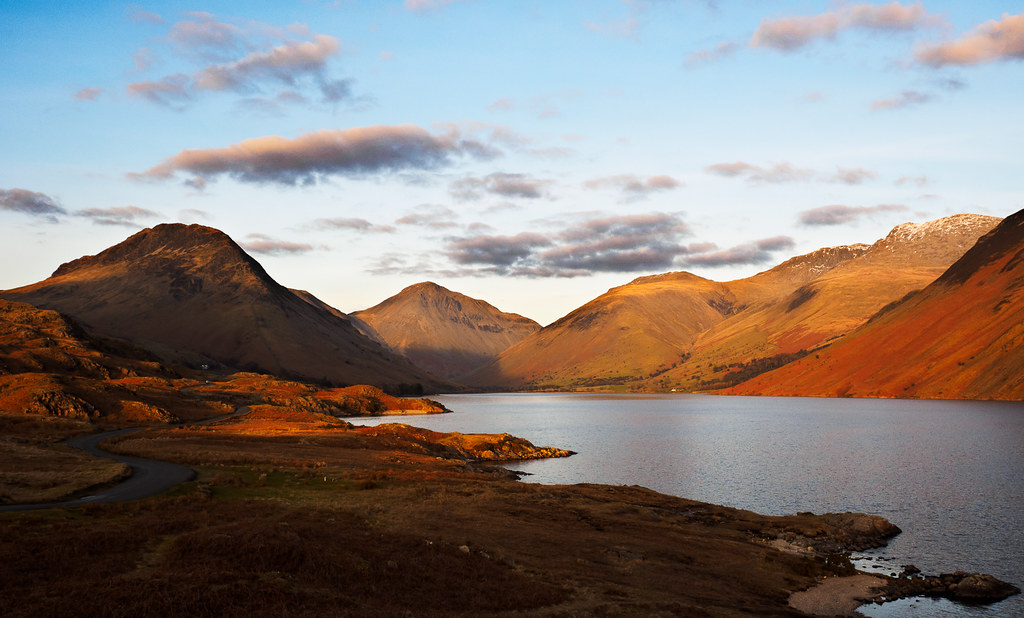 Wasdale at sunset by Alf Branch, on Flickr
Wasdale at sunset by Alf Branch, on Flickr
With enough atmospheric haze/polution it is possible to have the sun in shot as an orange disc as the 20 odd year old slide shot shows.
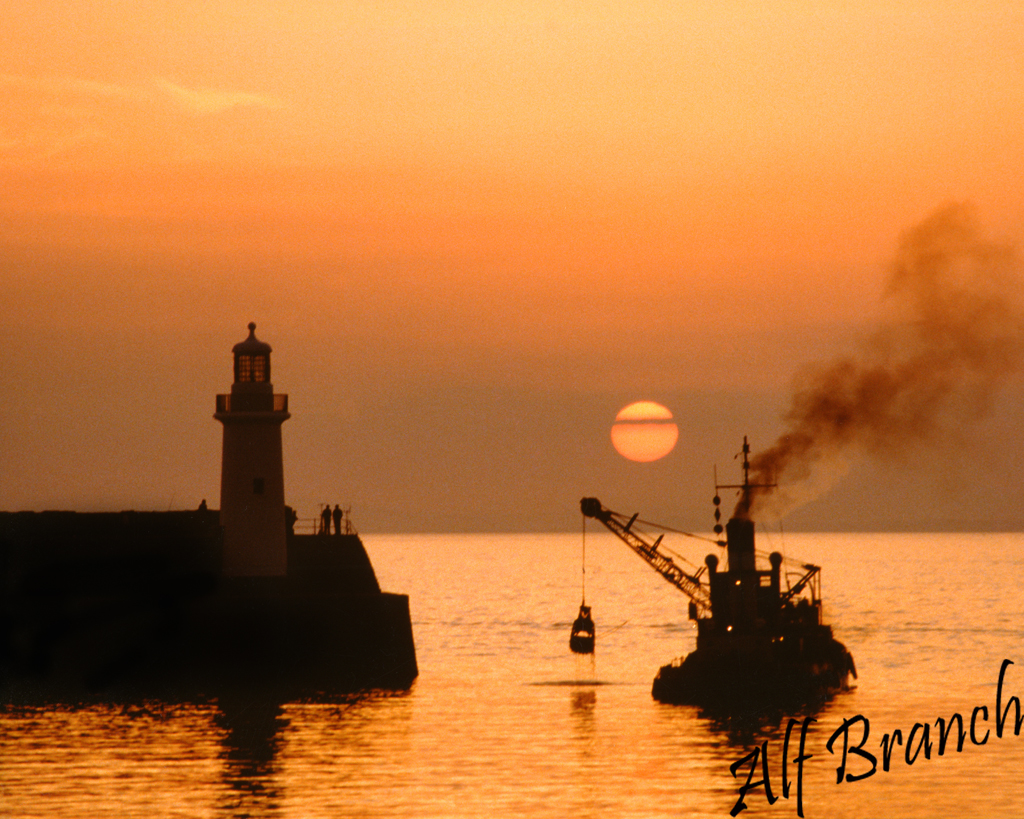 Clearway by Alf Branch, on Flickr
Clearway by Alf Branch, on Flickr
Always remember to look behind you as it may all be happening behind you while you concentrate on a great view with poor light
Learn how to spot the conditions needed for a sunset but they surprise you this one did for me as I was expecting things to be muted due to fog amd yes it was this vivid
 Parton-sunset-2 by Alf Branch, on Flickr
Parton-sunset-2 by Alf Branch, on FlickrThis was with the sun behind me
 Wasdale at sunset by Alf Branch, on Flickr
Wasdale at sunset by Alf Branch, on FlickrWith enough atmospheric haze/polution it is possible to have the sun in shot as an orange disc as the 20 odd year old slide shot shows.
 Clearway by Alf Branch, on Flickr
Clearway by Alf Branch, on Flickr
Last edited:
- Messages
- 8
- Name
- Marc
- Edit My Images
- Yes
I shoot sunsets tripod mounted and in manual mode. I use live view to check the exposure and make sure detail is being retained in the sky, and not blown out. A lot of times I'll bracket exposures for HDR merging, but I often like the results of a single shot better than the HDR merge.
Nod
Tootles
- Messages
- 45,588
- Name
- Nod (UK)
- Edit My Images
- Yes
I now use live view and adjust exposure with the EC dial to get the effect I want. Spotlessly clean front element keeps flare to a minimum even with the Sun in shot. If shooting with a camera that doesn't do LV, I generally dial in 1 1/2 stops of underexposure and use full frame metering. A quick chimp to check and reshoot if necessary.
- Messages
- 3,066
- Name
- Tim
- Edit My Images
- Yes
A couple of attempts from last weekend using a number of methods above plus tilt shift that helped with the low light and creating panoramas. Camped over night and although it clouded over at sunset thankfully the sky cleared shortly before dawn:
1. Campsite
 PS3A7769 by Good Lux Photos, on Flickr
PS3A7769 by Good Lux Photos, on Flickr
2. Before dawn
 PS3A7821-Pano-Edit-Edit by Good Lux Photos, on Flickr
PS3A7821-Pano-Edit-Edit by Good Lux Photos, on Flickr
3. Sunrise
 PS3A7895-Edit-Edit by Good Lux Photos, on Flickr
PS3A7895-Edit-Edit by Good Lux Photos, on Flickr
1. Campsite
 PS3A7769 by Good Lux Photos, on Flickr
PS3A7769 by Good Lux Photos, on Flickr2. Before dawn
 PS3A7821-Pano-Edit-Edit by Good Lux Photos, on Flickr
PS3A7821-Pano-Edit-Edit by Good Lux Photos, on Flickr3. Sunrise
 PS3A7895-Edit-Edit by Good Lux Photos, on Flickr
PS3A7895-Edit-Edit by Good Lux Photos, on Flickr- Messages
- 1,531
- Name
- Steven
- Edit My Images
- Yes
I really like #1 and #3 well captured! What tents are those? I've never seen a thing like that before, it almost looks like a bit enclosed bivi. Would you mind sharing the location and purpose of trip? I'm just being nosey because I love the mountains and wild camping!A couple of attempts from last weekend using a number of methods above plus tilt shift that helped with the low light and creating panoramas. Camped over night and although it clouded over at sunset thankfully the sky cleared shortly before dawn:
1. Campsite
PS3A7769 by Good Lux Photos, on Flickr
2. Before dawn
PS3A7821-Pano-Edit-Edit by Good Lux Photos, on Flickr
3. Sunrise
PS3A7895-Edit-Edit by Good Lux Photos, on Flickr
- Messages
- 3,066
- Name
- Tim
- Edit My Images
- Yes
I really like #1 and #3 well captured! What tents are those? I've never seen a thing like that before, it almost looks like a bit enclosed bivi. Would you mind sharing the location and purpose of trip? I'm just being nosey because I love the mountains and wild camping!
Glad you like! They are bivis, it's the Polarmond sleep system http://www.polarmond.ch/en/home-page good to -30 C. Location is above St Moritz in Switzerland, very remote and no phone signal.
- Messages
- 1,531
- Name
- Steven
- Edit My Images
- Yes
Looks like an incredible location! I went to Switzerland for the first time in January and I loved it, but unfortunately didn't get up to anything as exciting as you. I just had a look at those bivi's and they look awesome, but so expensive!Glad you like! They are bivis, it's the Polarmond sleep system http://www.polarmond.ch/en/home-page good to -30 C. Location is above St Moritz in Switzerland, very remote and no phone signal.
- Messages
- 13,051
- Name
- Alf
- Edit My Images
- Yes
I now use live view and adjust exposure with the EC dial to get the effect I want. Spotlessly clean front element keeps flare to a minimum even with the Sun in shot. If shooting with a camera that doesn't do LV, I generally dial in 1 1/2 stops of underexposure and use full frame metering. A quick chimp to check and reshoot if necessary.
I always use live view even when looking through the viewfinder and no need to chimp it magically appears in the viewfinder maybe you are using one of those old fashioned DSLR's
- Messages
- 1,893
- Name
- Joel
- Edit My Images
- No
Not a sunset, but here's an example of bracketing rather than using ND grads to achieve a decent amount of dynamic range...
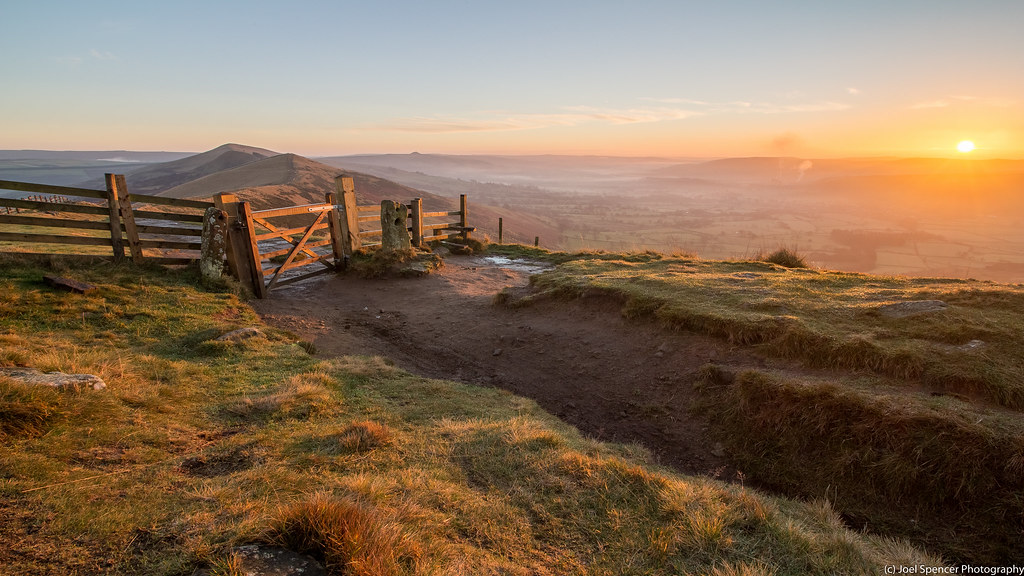 Mam Tor Sunrise by Joel Spencer, on Flickr
Mam Tor Sunrise by Joel Spencer, on Flickr
 Mam Tor Sunrise by Joel Spencer, on Flickr
Mam Tor Sunrise by Joel Spencer, on Flickr- Messages
- 2,480
- Name
- Steve
- Edit My Images
- Yes
Actually I make it an equal split Richard 3 with 3 withoutNot if you control the contrast by using ND grads.
Another alternative may be to consider using HDR techniques, however this is not so good for moving subjects, will require a bit more post processig, and it can be a bit easy to go "over the top" if you are not careful
..
#1 TMost of these guys are using ND grads (they are shooting a sunrise)
Photographers by Richard Taylor, on Flickr
If you are using 2 exposures and combining them better to use layer masks in Photoshop than a HDR program because you have much more control over the end result that way.
A lot of the HDR programs or plug ins are automated or semi automated so they throw out some bilge you don't really want, from the tests I have done, not that I use HDR.
Last edited:
- Messages
- 2,480
- Name
- Steve
- Edit My Images
- Yes
You have all the technique comments here Andrew but the same rules applies with any landscape composition you need a focal point, not just the sunset else you will end up with ABS (another bl**dy sunset).
Dealing with flare is difficult sometimes and it's very related to the particular lens, some exhibit excellent performance when shooting into the sun, some not. If you do use a filter any scratches or blemishes on the filter will increase the chance of flare. If you are shooting into the sun and you can see the flare in the frame, just mask the sun out with a finger, pen, credit card whatever then assuming your shooting off a tripod take another shot, add some compensation or bracket because blotting the sun out with your finger will alter the exposure. Then blend the two or more shots in PS. Grads are all very well until you have something such as a lighthouse protruding above the horizon then the exposure on that element will be under compared to the rest.
I guess that the quest for all of us, producing a shot that stands out above all the others. It's a tough job as there are so many brilliant photographers now!
Dealing with flare is difficult sometimes and it's very related to the particular lens, some exhibit excellent performance when shooting into the sun, some not. If you do use a filter any scratches or blemishes on the filter will increase the chance of flare. If you are shooting into the sun and you can see the flare in the frame, just mask the sun out with a finger, pen, credit card whatever then assuming your shooting off a tripod take another shot, add some compensation or bracket because blotting the sun out with your finger will alter the exposure. Then blend the two or more shots in PS. Grads are all very well until you have something such as a lighthouse protruding above the horizon then the exposure on that element will be under compared to the rest.
I guess that the quest for all of us, producing a shot that stands out above all the others. It's a tough job as there are so many brilliant photographers now!
Last edited:
Tringa
Numpty of the Day'
- Messages
- 5,836
- Name
- Dave
- Edit My Images
- Yes
You have all the technique comments here Andrew but the same rules applies with any landscape composition you need a focal point, not just the sunset else you will end up with ABS (another bl**dy sunset).
Very true. It is very easy to end up with a shot that is just a lot of pretty colours.
Also as alluded to in one of the earlier posts, sunset photography is photography at or around the sunset, not necessarily of the sunset.
Dave

